Bacon is basically a national treasure for us Brits, and it's been that way for a while. The traditional British breakfast of bacon and eggs said to date back to 1560. There are even are records of the Romans salting sides of bacon as early as 200BC. It seems we're in a long running relationship with the humble rasher, which is slowing little sign of slowing. In today's terms, the bacon industry is worth over £900 million, with, according to lovepork.co.uk, British consumers currently purchasing over 150,000 tonnes per year. So, we might be eating a lot of bacon, but do we really know much about it?
How is bacon made?
Bacon is produced from pork cuts that are cured (a process of preserving) using salts, or, subject to the recipe being used, a mixture of salts and sugars. Depending on the process the cure is either mixed together and rubbed on the outside of the pork, or made into a brine, which the pork is soaked in, or which is injected into the pork. Once curing has begun, the pork is left for a number of days, or even up to a week, allowing the ingredients to develop and the salt (via osmosis) to penetrate the meat. The length of time a cut takes to cure really depends on curing process and the cut of pork being used, or the size of the cut. Only once the pork is fully cured, can it be classed as bacon.
What types of bacon are there?
Back Bacon
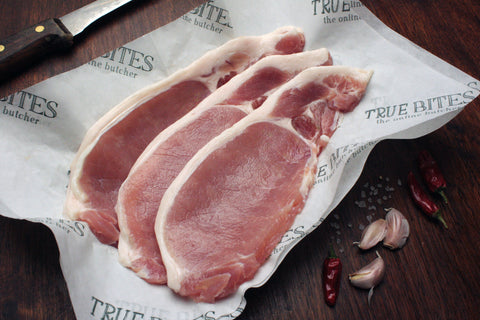
Back bacon is by far and away our most popular cut of bacon in the U.K. These are the rashers you'll be having on your local cafe breakfasts and sandwiches. It's produced from pork loin, is usually very lean, particularly the eye of the loin, and shaped almost like an apostrophe. It's basically the perfect bacon for a plated breakfast.
Bacon Medallions
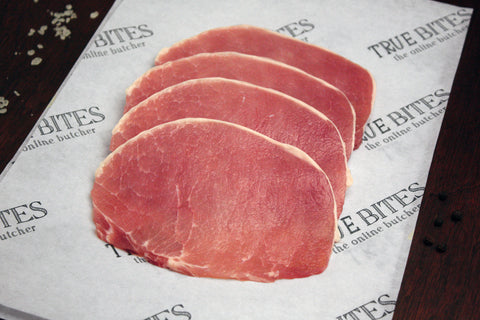
As outlined in our article 'What are Bacon Medallions?', bacon medallions are produced from cured pork loin, with everything other than the eye of the bacon loin trimmed off. This leaves you with an extremely lean, circular rasher, which can have up to 30% less fat that a normal rasher of bacon. This effectively means; bacon medallions are low fat bacon.
Bacon Chops
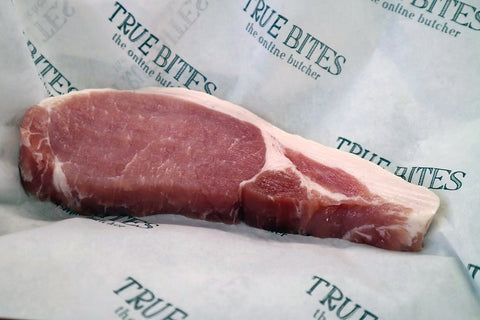
Bacon chops, sometimes called bacon steaks, are thick cut chops, which are taken from whole bacon loins. In other words, a bacon chop is basically a super thick cut rasher of bacon. It comes from exactly the same place, and is produced the same way, as the back bacon you put on your sandwich, it's just, well, thicker.
Streaky Bacon

Unlike back bacon, which is made using pork loin, streaky bacon is made using pork belly. This is the bacon you wrap around your sausages to make pig's in blankets. Streaky bacon carries a fair bit of fat and is shaped more like a ruler, hence is often referred to as bacon strips. It is often regarded as the bacon enthusiast's bacon of choice.
Middle Bacon
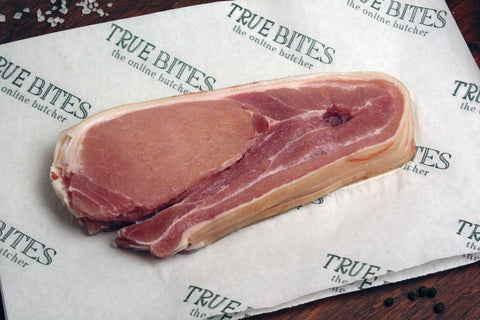
Middle bacon is an old fashioned variety of bacon, which is still popular with the more traditional amongst our customers. It combines both the loin and the belly (i.e back bacon and streaky bacon) in one rasher, and, unusually for this day and age, is served with the rind left on.
American Bacon
Unlike here in the U.K, where streaky bacon is less popular than back bacon, almost all bacon sold in America is streaky bacon. It's so popular, they don't bother to call it streaky, they just call it bacon. The only subtle difference may be the ingredients used in the curing process, as lots of American bacon will have added sugar in the cure. They just like their bacon a little sweeter.
Lardons
Lardons are basically small cubes of diced bacon, often produced using pork belly, but other similarly fatty parts of the animal may be used. Lardons are by nature more fatty, as the name suggests, they are served with 'the lard on'. They bring a real luxurious flavour, mainly due to the higher fat content, and are perfect for frying and using in recipes, or serving hot in salad or salad dressings,
How is bacon cured?
As outlined above, bacon comes in many different shapes and sizes, and as there are different types of bacon, there are also different ways to produce the bacon. The 4 main types of curing, include dry curing, wet curing, maple curing, and sweet curing.
Dry Cured
Selected cuts of pork are rubbed with a dry salt mix and left to cure for up to one week. Cuts are turned daily to produce an even cure and often air dried for up to one week after they are fully cured. Dry curing actually removes water, which means the final bacon product will shrink far less during cooking, and you won't get any of those ‘white bits’ left in the pan.
Wet Cured
Sometimes referred to as Wiltshire cure, wet cured bacon is produced through either a process of injecting with or soaking the pork in brine. Once injected, or left to soak, the pork will take 2-3 days to become fully cured. This process of curing will actually enable the pork to retain it's moisture content, or even take more on (in the case of injecting), which will give you a wetter bacon, hence the name.
Maple Cured
Maple syrup is added to either a dry or wet cure.
Sweet Cured
Sugars, such as mascavado, demerara or even molasses are added to either a dry or wet cure.
What other bacon flavours are there?
Smoked Bacon
It is often wrongly assumed that smoking is a way of curing bacon. This is not the case, smoking, although originally employed as a way to extend shelf life, is basically a way of adding another subtle layer of flavour to bacon. Smoking can only be done after the bacon has been fully cured using one of the methods outlined above. Depending on the different wood chips used, smoking can impart different flavours into the meat. Oak smoked is probably the most popular flavour in the U.K, although hickory smoked is very popular in America.
Other Flavours
There are now also many other flavours of bacon available to consumers, such as peppered, sweet chilli, and even boozy flavours. These are all created using similar curing methods as outlined above, except extra ingredients are added to the salt mixes or brines to create different flavour profiles.
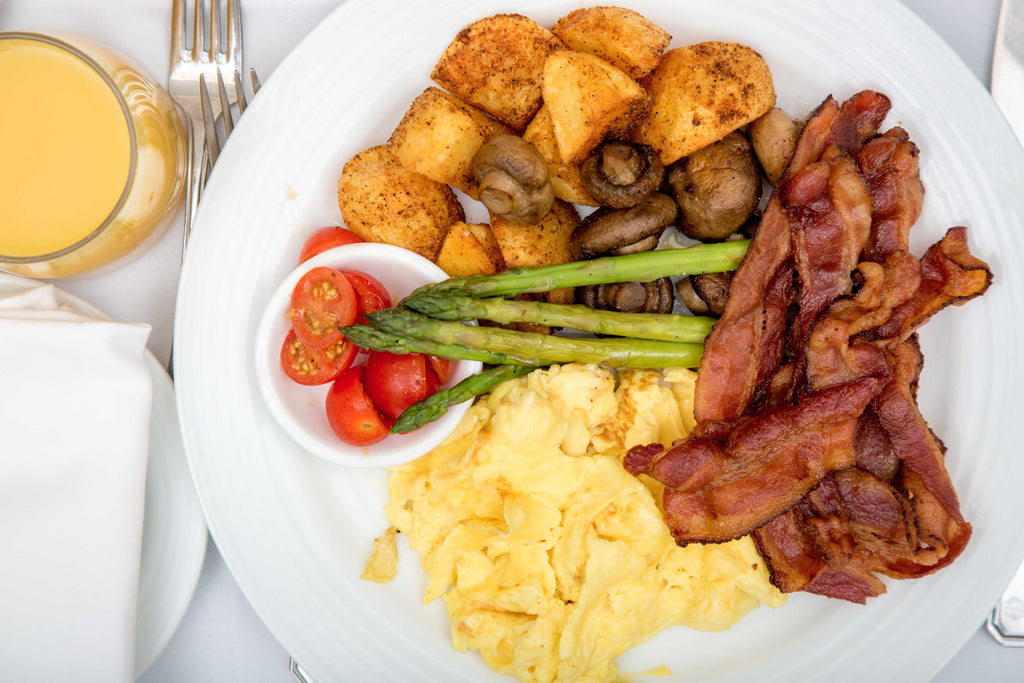
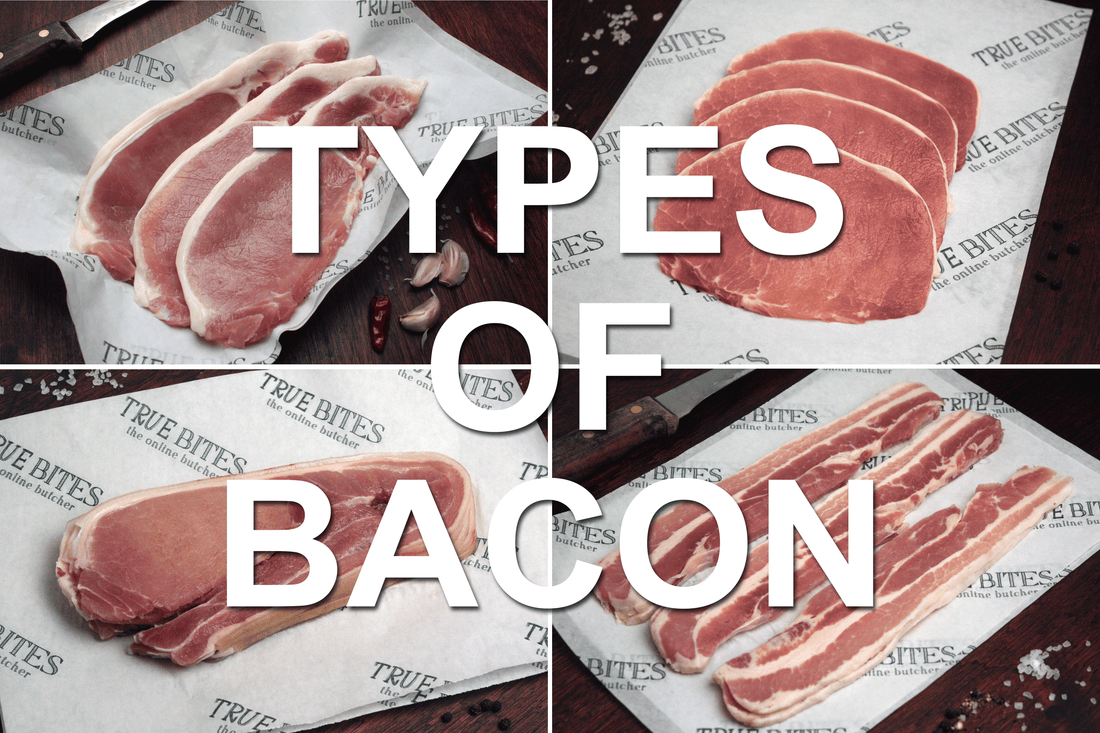
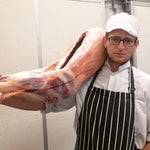
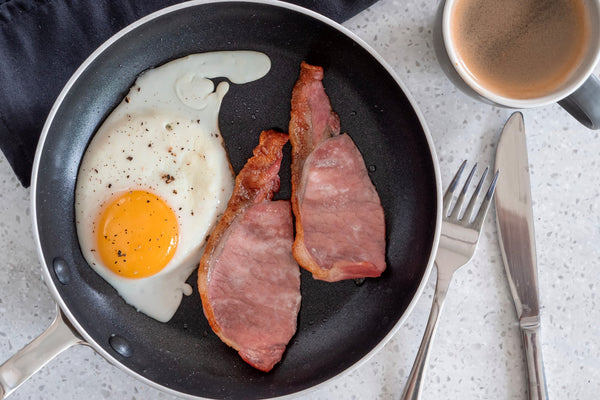
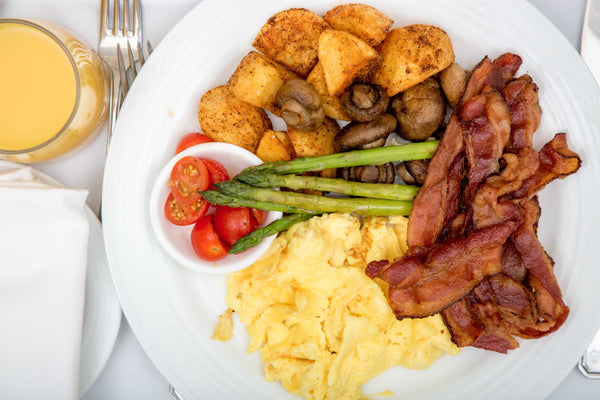
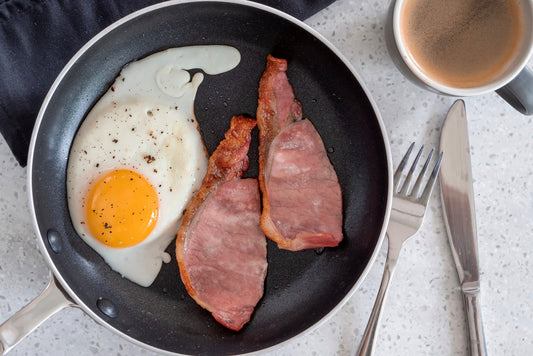
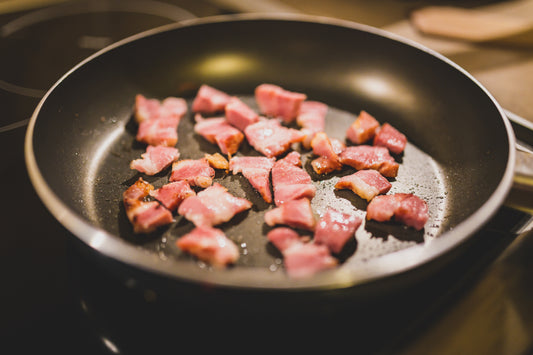
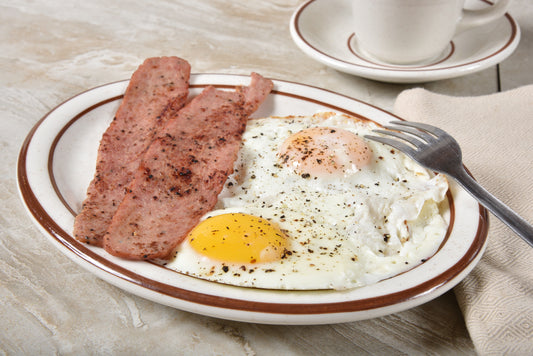
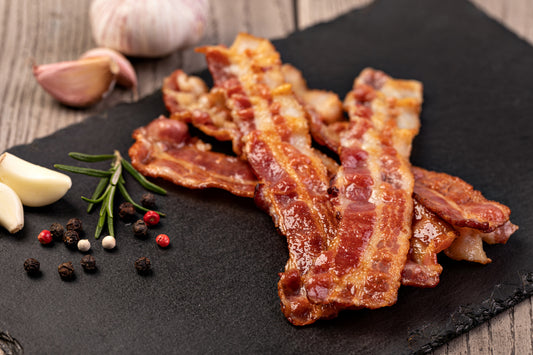
4 comments
Anything about “Oyster Cut” Bacon?
Extremely informative, thank you. Mainly streaky bacon is available here in Central California and back bacon rarely for sale in the supermarkets or served in restaurants. My mother would have considered streaky bacon an abomination! I like it crispy on a sandwich.
I wonder why you didn’t include collar bacon?
Are you going to be doing lamb beef or pork Hearts
And possibly sweetbreads? Please.